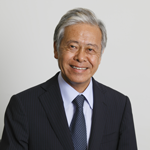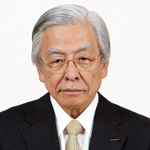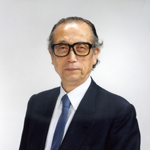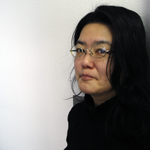Messages from the Organizers

Asia has become the focus of TPAM.
The Japan Foundation opened the Asia Center last year in April. In order to “communicate, connect and share, collaborate, and create” together in Asia, the Asia Center has been eagerly promoting exchanges and collaborations within the region in a wide range of fields from theater, music, fine arts, film, sports to Japanese-language education and academic research.
TPAM is the very place where the Asia Center can attain its goal at best. Every year until now, the Japan Foundation has been inviting an average of twenty presenters and professionals from around the world to TPAM. This year, however, the number of our guests has reached fifty, many of whom are from Asia. In this year’s programs, more emphasis is placed on Asia: The “TPAM Direction” programs introduce contemporary performing art scenes from Indonesia, Thailand and Philippines as well as Japan; the new program of “Asian Artists Interview,” starting this year, brings artists from around the region to interview each other, aiming at building a foundation for future collaborations among them.
Making a step into a new direction, TPAM continues being the place where people from around the world meet, learn other cultures, discuss and exchange ideas, and strengthen the network. We strongly hope that TPAM will grow as the platform for performing arts in Asia leading to collaborations among different cultures, creating encounters with Asia and the world.
Hiroyasu Ando
President, The Japan Foundation

This is the fifth year that Kanagawa Arts Foundation is participating in the Performing Arts Meeting in Yokohama as one of the organizers. We would like to express our gratitude to those who are supporting this meeting.
International exchanges are becoming increasingly important also in the field of the arts, particularly in the region of Asia in the most recent years. This year’s edition of TPAM has a number of programs featuring new collaborations among artists from the region some of which will be presented at Kanagawa Arts Theater. As the motto of our theater “Artistic Creation, Training and Human Resource Development, and Local Community Contribution” says, we are determined to contribute to the development of arts and culture. We also hope that this Meeting will become the place of new encounters with arts and culture and fruitful exchanges for every participant of the event.
Itaru Koeda
President, Kanagawa Arts Foundation

Historically having always been open to new things, Yokohama today provides with opportunities for contemporary experimental arts. Yokohama Arts Foundation aspires to promote arts of all genres and to contribute in building rich and attractive urban environment in this city of Yokohama. We are very proud to participate in the Performing Arts Meeting in Yokohama as a part of the organizer’s team and be a wing in the forming of an international platform for performing arts.
In the fifth edition of the Meeting to be held in Yokohama this year, the strong focus is on Asia, the region that has been growing rapidly in the recent years. There are many good programs featuring young artists from Japan and other countries in Asia, international collaborations and meetings for performing arts professionals from all over the world, making this Meeting an excellent platform of performing arts in Asia. We would like to extend our warmest welcome to all the guests from overseas as well as Japan, and strongly hope that each of you will have many fruitful encounters and exchanges at the Performing Arts Meeting in Yokohama 2015.
Kiichi Sumikawa
President, Yokohama Arts Foundation

At the opening of this edition of TPAM, I would like to express my gratitude toward the participants, cooperators and supporters on behalf of the secretariat.
Performing Arts Meeting in Yokohama (TPAM in Yokohama) focuses on Asia this year. Before going into reasoning behind the Asian focus, I would like to explain what TPAM is again.
TPAM is not a festival but a meeting and platform. Festivals are basically expected to contribute to people who live around its venues and a wider audience in general, but what TPAM expects in the first place is that all the practitioners who connect performing arts works and audience make use of itself.
What TPAM puts importance on in terms of the works that it introduces is contemporariness. Performing arts are fundamentally and ontologically contemporary, so probably it is only rhetorical to say this piece is contemporary and that piece is not. We use the word to distinguish the category from works that purely aim to preserve existing culture and works of which utmost priority is commercial success, since there have already been efficient circuits for these types of projects, and to express our expectation for works that reflect or respond to the reality of our times. We also strongly expect those works to be connected to international awareness and practice.
TPAM, as one of the platforms in Asia, had long been receiving a lot of demands, especially from participants who come from distant countries, for showings of works from neighboring countries. It was also expected that TPAM would offer opportunities for international connection to performing arts professionals from neighboring countries (this means that we should also offer opportunities for seeing works from other areas of the world to participants from Asia, which is one of the tasks we need to work on sooner or later). However, we were not really able to meet the expectation for connecting Asian works to other regions due to the limitations in terms of the scale and reasoning consistency of our budget. I would like to stress here that the establishment of The Japan Foundation Asia Center for bilateral international exchange enabled us to overcome economic disparities and to secure mobility, i.e., to bear flight and accommodation costs in a certain scale to invite key persons to TPAM.
The fact that programs focusing on Asia have rapidly increased in Japan and the world speaks for the amount of expectation for Asia, and that must be because of the economic growth of China, India and other Asian countries that even overwhelms Europe and North America. The fact that TPAM has become able to focus on Asia is not irrelevant to this. With this background in our mind, we start a new program “TPAM Co-Production” and introduce a lot of works by artists who are based in Asia.
As you are familiar with, the system called co-production lets venues and festivals make full use of limited resources such as budget and personnel, and has been employed in Europe and other areas of the world, but not really in Asia. There has been criticism on the tendencies of the system, for example, to reproduce similar types of works, but in Asia, when people work together internationally, that still tend to take the form of collaboration. In international collaboration, often, one organizer organizes multinational artists and staff while multinational organizers get together to create one piece in international co-production. It is necessary to be careful not to let the organizers’ convenience take priority but to have the artists lead the project to contribute to the creation of new values, but basically, for us who connect works of art and audience, co-production can be an opportunity for new discoveries and possibilities, since it lets us cooperate beyond economic imbalance and conventions.
The artists who take part in “TPAM Direction” and “TPAM Co-Production” are based in Thailand, Indonesia, the Philippines, France, China and Japan. Also, although they do not show performances this time, artists from Malaysia, Singapore and Belgium have presentations of their activities. What I think I find in the activities and works of these artists is not “non-Western” “excellent values” but something unnamable and absolutely “new.” That novelty is not simply about being new in comparison to the old; that is not about Asian possibility against Western dead-end, not about a shift from total art to decentralization or moves from rationalism and capitalism to something else. I think that the novelty is directly connected to the fact that we are required to construct values from the scratch now, the fact itself that we are in the middle of that process.
I hope that this event contribute to the artists who find something new, going beyond merely sociological documentation of the “reality,” and the participants who decidedly support their works.
Hiromi Maruoka
Director, Performing Arts Meeting in Yokohama
President, Japan Center, Pacific Basin Arts Communication




